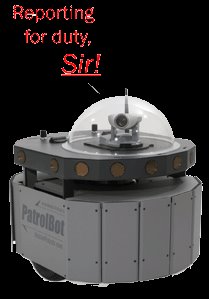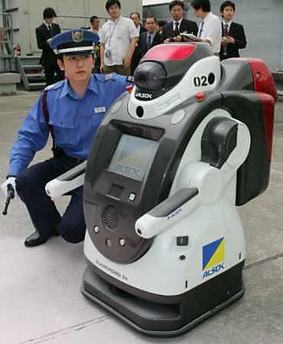Robots to Guard Israeli Border Kill Zone
The system, called the "See-Shoot" system, is currently being installed and will be fully operational by the end of 2007. It consists of automated weapons stations connected through a command center to visual, ground andairborne sensors.
The system is the culmination of years of development by defense contractors Rafael, Elbit Systems and IMI.
The system is part of an IDF strategy of low-signature/no-signature warfare. The no-signature doctrine strives to keep soldiers out of harms way as much as possible.
However, "no-signature" warfare does not mean 'no responsibility' yet.
Eventually the See-Shoot system will be able to operate as a completely autonomous closed-loop system. But for now, the sensor data will be monitored by soldiers and a commanding officer will approve activation of the automated kill function.
The system is designed to enforce a 1500 meter(almost 1 mile) wide area along the border. Future plans include adding anti-tank missiles to extend the width of the no-mans land to several kilometers.
I wonder if they made plans for removing the dead bodies from the kill zone. Will they have to disable the whole system or do they have a robot that can drive through the zone and clean up? Maybe they will just leave the dead bodies laying around to mark the boundary of the buffer zone.
Similar automated systems are under development for the border in Korea.
DefenseNews.com - Israel Wants Robotic Guns, Missiles To Guard Gaza Border - 06/01/07 17:55
Labels: automation, military robots, security robot




















